How Is 3D Printing Used in the Tourism Industry?
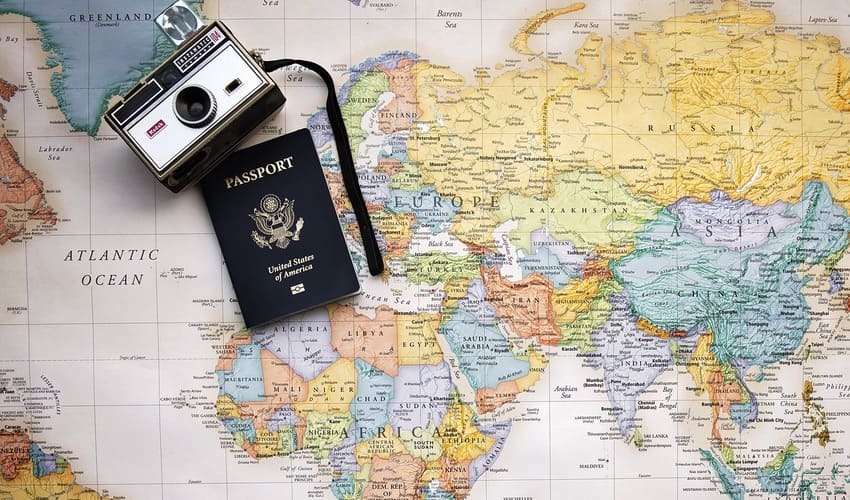
Additive manufacturing, with its sustainability benefits and capacity for customization, has found its place in the travel industry. The use of 3D printing has expanded beyond just consumer goods, with aircraft parts being additively manufactured to improve sustainability and reduce weight. Hotels are also leveraging 3D printing to create personalized marketing items, unique 3D printed food, and customized gadgets for their guests. This intersection of tourism and technology opens up new possibilities and experiences for travelers. Institutions and facilities within the tourism sector are embracing 3D printing to enhance the overall tourist experience and offer memorable moments. Discover some exciting and promising applications of 3D printing in the tourism industry that guarantee unforgettable experiences.
3D Printed Bobble Head Figurines, India
The Indian state of Madhya Pradesh presents a captivating advertising campaign that evokes a sense of pure nostalgia through the use of 3D-printed bobblehead figures. Produced by Hungry Films, a Mumbai-based production company, this campaign showcases various bobblehead characters and toys, aiming to not only stir childhood memories but also serve as reminders of the state’s notable tourist attractions. These vibrant and lively bobbleheads, created using the SLS (Selective Laser Sintering) printing process, ingeniously merge the essence of two distinct eras, blending modern technology with a nostalgic charm.
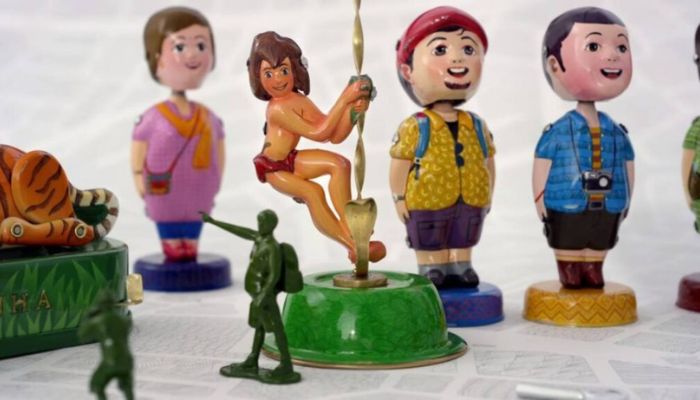
A Disney Tarzan toy, made with SLS printing technology (photo credit: Imaginarium)
Dinosaur Replica Boosts Tourism, Australia
A captivating tourist attraction is set to grace the city of Roma in Australia, located approximately 500 kilometers west of Brisbane. This attraction takes the form of a remarkable 15-meter-long and 4-meter-high 3D replica of Rhoetosaurus, a dinosaur species. The life-size replica serves as a tribute to the significant discovery of Rhoetosaurus fossils near Roma nearly a century ago, marking it as the oldest dinosaur skeleton ever unearthed in Australia.The creation of this replica involves the usage of 3D printing technology. CNC (Computer Numerical Control) technology is employed to fabricate the larger components, while additive manufacturing is used to craft the intricate details such as scales, eyes, and other smaller elements. This combination of manufacturing techniques ensures the replica’s accuracy and attention to detail.
Beyond its role as a tourist attraction, the dinosaur replica also aims to inspire people to continue searching for fossils and delve into the history of millions of years ago. By showcasing the magnificence of Rhoetosaurus, it encourages a deeper understanding and appreciation of the prehistoric world that existed hundreds of millions of years in the past.
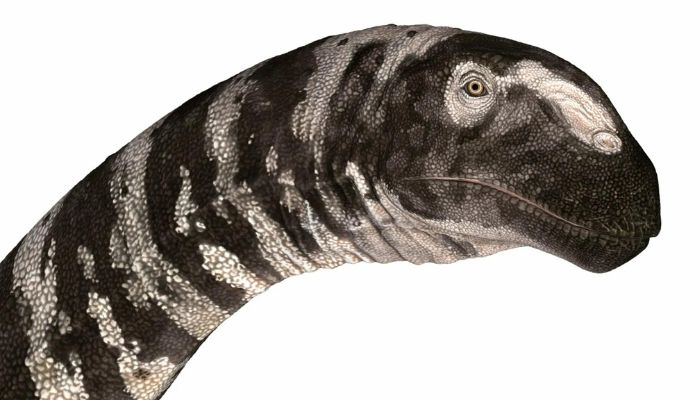
The bones of Rhoetosaurus were discovered in Queensland in 1924. (Photo credit: Queensland Museum)
Interactive Museum Experience Enhanced by 3D Printing, Mallorca
Museums are increasingly incorporating 3D technologies to enhance the overall visitor experience. The Covid-19 pandemic played a significant role in accelerating this trend, as museums worldwide began scanning their exhibits to provide online access to 3D files of their artworks and artifacts. An exemplary case is the Museum of Manacor in Mallorca, which not only established a vast online library of 3D files for educational purposes but also presents 3D-printed replicas of historical artifacts. These replicas allow visitors, particularly those with visual impairments, to touch and engage with the exhibits, offering them a comprehensive 360° experience.
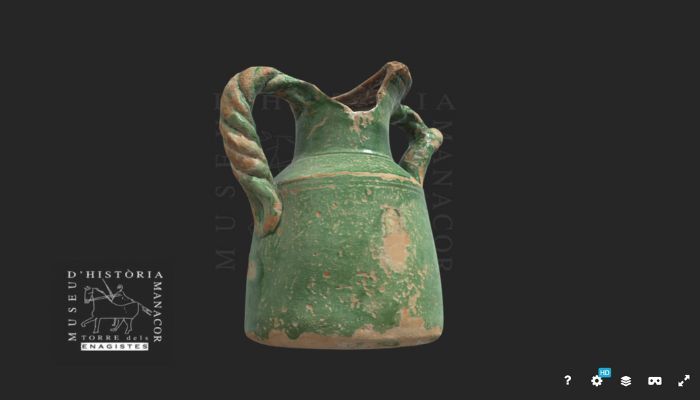
Users can interact with museum exhibits on sketchfab.com (photo credit: sketchfab.com/Museo Manacor)
3D Printing for Accessibility, The Netherlands
The Netherlands entices visitors with its remarkable art scene, where the Rijksmuseum and Van Gogh Museum typically top the list of tourist attractions. However, the influence of 3D printing can be witnessed in various aspects across the country. The capital city is adorned with 3D printed facades, temporary housing cabins, and even bridges. Embracing this technology, the Van Gogh Museum in Amsterdam aims to enhance accessibility and improve the visitor experience.
Inside the museum, an intriguing implementation of additive manufacturing can be found. In the entrance hall, a 3D printed miniature replica of the museum allows visitors to gain an overview and effectively plan their museum visit. This unique perspective grants them the opportunity to admire the museum’s architecture from a bird’s-eye view. The “tactile model” has been thoughtfully designed to be touched, providing a tactile experience. Additionally, the model includes Braille inscriptions, enabling blind individuals to autonomously navigate the museum’s corridors without feeling lost. This impressive miniature museum was collaboratively created with the involvement of the Bartiméus Fund and the Accessibility Foundation.Furthermore, the Van Gogh Museum offers a truly interactive tour called “Feeling Van Gogh,” catering to the visually impaired. As part of this experience, 3D printed paintings by the renowned artist are available, allowing visitors to feel, smell, and truly engage with the artwork. Among these tactile masterpieces are Van Gogh’s iconic Sunflowers, providing an immersive encounter with the artist’s creations.
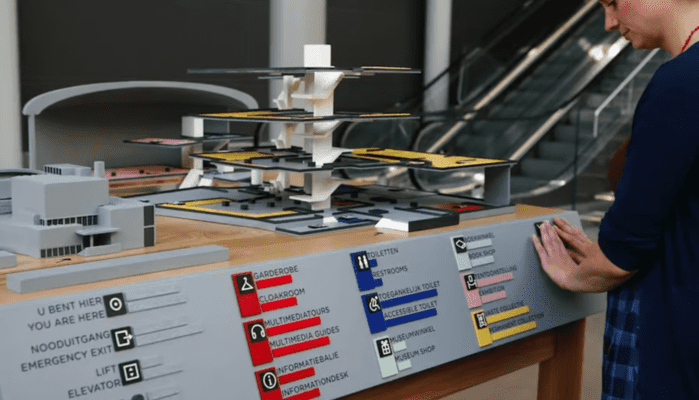
The 3D printed model of the museum provides more accessibility (photo credits: Petra Dorenstouter / Van Gogh Museum)
A 3D Printed Board Game Is a Gateway to Tourism, The Gambia
One way that 3D printing is transforming tourism is related not just to travelers but those living in these destinations. Take the next project for example. Fatou Juka Darboe, the co-founder of the first and only 3D printing company in The Gambia, and Isatou Foon, are using 3D printing to promote local culture while also preserving the environment. More specifically, in partnership with the Youth Empowerment Project from the International Trade Center, the two have created a 3D printed board game centered around the Ninki Nanka Trail to teach tourism the legend of the Ninki Nanka Dragon and enable them to discover the natural and cultural heritage of communities residing along the river Gambia. The initiative not only support local artisans, but is expected to help boost community-based tourism in the area and preserve culture for future generations.
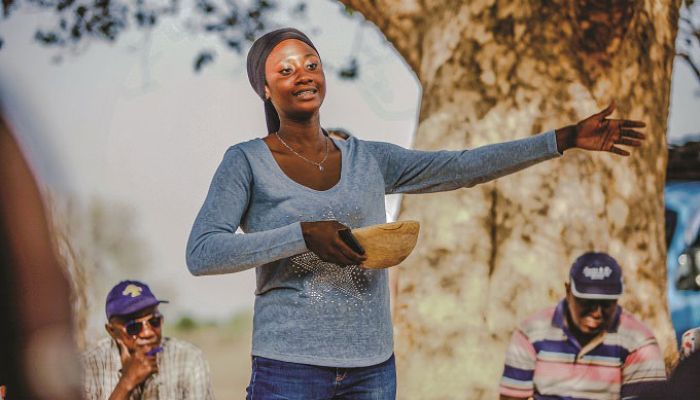
Isatou Foon is using 3D printing to help preserve cultural heritage and promote tourism in The Gambia (photo credits: World Trade Organization)
3D Printing to Promote Tourism, India
The Ministry of Tourism in Goa, India, has recognized the potential of 3D printing in boosting tourism and plans to leverage this technology to construct a prominent building in the capital city of Panaji. The project aims to not only attract tourists but also showcase the capabilities of 3D printing in the construction industry. One of the buildings will serve as a conference center, boasting the largest auditorium in the region with a seating capacity of up to 1,300 people. Additionally, Minister Rohan Khaunte expressed the intention to develop a museum and other infrastructure to further enhance the appeal of Panaji as a tourist destination. Although still in the early stages, the progress of this initiative is being closely monitored for future updates.
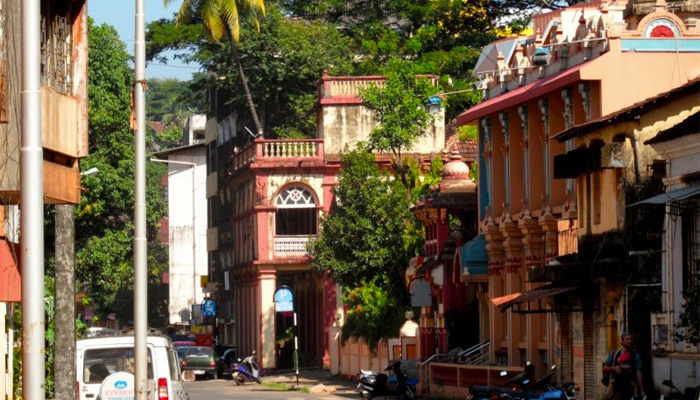
3D printing is expected to boost tourism and highlight prospects for the construction industry (photo credits: Think3D)
3D Hotels for Regenerative Tourism, Mexico
The concept of 3D printed hotels, once considered a science fiction idea, has gained traction in recent years, particularly within sustainability circles. Habitas, a hotel brand, has emerged as a global leader in this innovative approach, employing a modular, flat-pack model for constructing sustainable luxury resorts. The basic building structures, such as rooms and lobbies, are 3D printed in Habitas’ factory in Mexico and then assembled on-site. This end-to-end control allows for efficient construction, with hotels being built within six to nine months and generating a return on investment in just two years, surpassing the timelines of traditional hotels. Not only does this approach offer speed and financial benefits, but it also contributes to sustainability. The lightweight, flat-pack method reduces building costs, minimizes waste, and supports Habitas’ commitment to using local carpenters and sustainable materials, often replanting trees to ensure a regenerative approach to construction. While Habitas stands out as a pioneer in the field, other tourism brands are also exploring the potential of 3D printing technology, creating exciting possibilities for the sustainable travel sector.
However, critics raise concerns about the environmental impact of transporting flat-pack parts over long distances. To enhance sustainability, setting up regional printing facilities and minimizing air travel are suggested. Despite the ongoing debates, 3D printed hotels represent a significant advancement in efficient and eco-friendly construction, with the potential to revolutionize the industry and create unique experiences while protecting the environment.
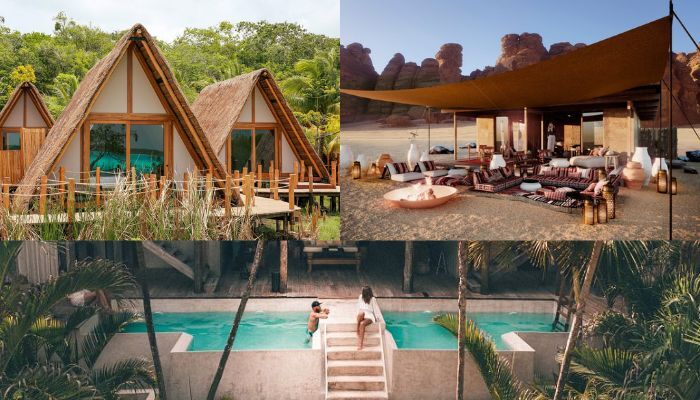
Take a luxurious and sustainable vacation. Habitas makes that possible in these 3D printed cottages (photo credit: Habitas)
Lewis Grand Hotel, Philippines
Located in Angeles City, Pampanga, Philippines, the Lewis Grand Hotel stands out as a remarkable achievement in 3D printing. Constructed entirely from a blend of sand and volcanic ash, this innovative hotel was brought to life through the collaboration of hotel manager and engineer Lewis Yakich and 3D printing specialist Anthony Rudenko. With dimensions of 10.5 meters by 12.5 meters and a height of 3 meters, the building covers an area of approximately 130 square meters. The unique two-bedroom villa showcases the versatility of 3D printing, with even the living room and hot tub being 3D printed. The printing process spanned around 100 hours, though it was not continuous. The 3D printer used for this project is subject to ongoing refinements. Nonetheless, Yakich emphasizes its adaptability, making it easy to assemble, disassemble, and relocate for future endeavors, even enabling its transfer to different locations for upcoming projects.
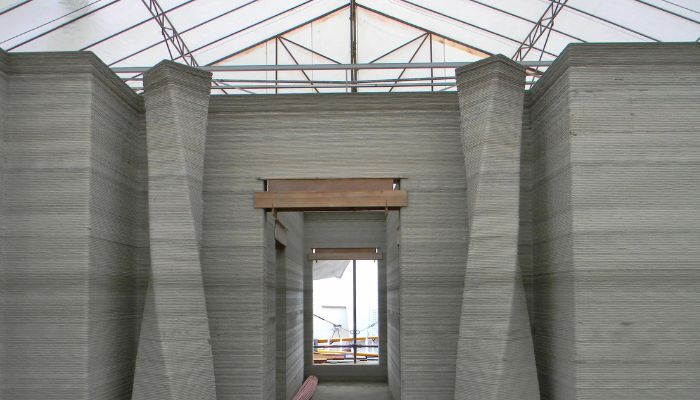
The 3D printed Grand Hotel in the Philippines (photo credits: Anthony Rudenko)
El Cosmico, A Hotel in Texas, USA
A significant tourism venture centered around additive manufacturing is currently being developed in the Texas desert landscape. This project is the result of a collaboration between hospitality visionary Liz Lambert, ICON Group specializing in large-scale 3D printing for architecture, and renowned architectural firm Bjarke Ingels Group (BIG). Together, their objective is to transform El Cosmico, an existing eight-acre camping and hotel site, into something extraordinary. The expanded site, spanning 15 hectares, will feature a 3D printed hotel, recreational amenities like swimming pools and spas, as well as affordable housing constructed using additive manufacturing techniques.
Within the accommodations, designed as hotel rooms, a single 3D-printed wall will rotate, with a loft bed positioned at the center and a window above, offering breathtaking views of the sky. The first component of this project will be a 3D printed pavilion for outdoor artistic performances at the Long Center for The Performing Arts. The usage of additive manufacturing will enable the creation of curved, domed, vaulted, and parabolic structures that would otherwise be unattainable.The overarching goal of this project is to uphold the essence of the present-day El Cosmico, which embodies the harmonious blend of art, nature, and hospitality.
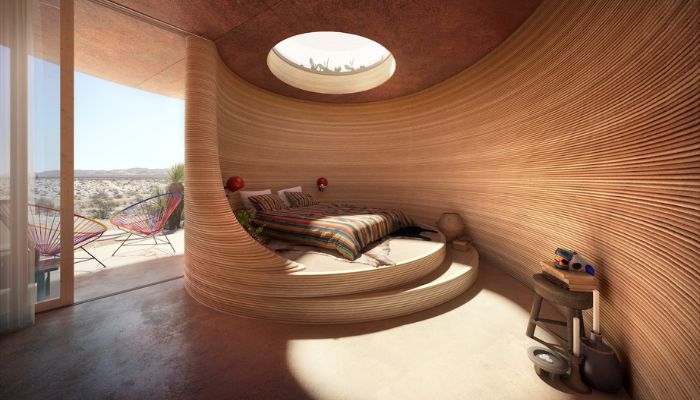
Sustainability and hospitality are among the core principles of the El Cosmico hotel project (photo credits: El Cosmico / ICON)
What do you think of these 3D printing projects in the tourism industry? Let us know in a comment below or on our LinkedIn, Facebook, and Twitter pages! Don’t forget to sign up for our free weekly Newsletter here, the latest 3D printing news straight to your inbox! You can also find all our videos on our YouTube channel.
*Cover photo credit: Pam Patterson, Pixabay






